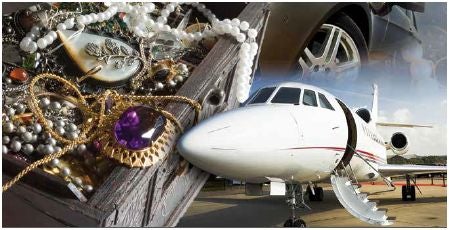 When a modestly paid public official is suddenly able to take lavish holidays, buy a new sports car, or purchase expensive jewelry it raises eyebrows - and suspicion. Corruption may be suspected but it is often frustratingly difficult to prove – so what is the best way to deal with the sources of unknown wealth?
When a modestly paid public official is suddenly able to take lavish holidays, buy a new sports car, or purchase expensive jewelry it raises eyebrows - and suspicion. Corruption may be suspected but it is often frustratingly difficult to prove – so what is the best way to deal with the sources of unknown wealth?
‘Illicit enrichment’ poses a legal and practical challenge for authorities around the world. One option is to criminalize the offence, meaning in practice that the prosecution does not have to prove that the assets come from corrupt behavior, but simply cannot be justified from legitimate sources of income. The public official then has to provide evidence of the legitimate source of the mysterious new found wealth, and if it cannot be adequately explained then suffer the legal consequences.
The latest publication of the World Bank’s Stolen Asset Recovery Initiative (StAR) takes a long hard look at illicit enrichment, along with the potential benefits and difficulties of criminalizing the offense. The guide - “On the Take: Criminalizing Illicit Enrichment to Fight Corruption,” is based upon the experiences of the forty four countries around the world that have undertaken this move, highlighting both its benefits and difficulties. These countries are among the one hundred and forty signatories to the United Nations Convention against Corruption.
The study by StAR sets out the importance that many of the countries give to criminalization as a valuable complement to the traditional toolkit in combating corruption, but it also highlights the challenges they have in pursuing illicit enrichment through the courts. The extensive resources and know-how needed to track detect and preserve the evidence and proceeds of the crime, are often beyond the reach of the authorities in developing states. The illicit enrichment offense is also controversial in some jurisdictions as it can be understood as placing the burden of proof upon the accused and not the prosecution – raising important issues of presumption of innocence and human rights. These are legal and practical challenges that need to be very carefully considered and balanced, and are not in this way unique to illicit enrichment. In addition, some countries which are home to financial centers do not recognize illicit enrichment as an offense, further complicating the tracing and recovering assets through mutual legal assistance.
Notwithstanding these challenges, “On the Take” reveals the potential of the offense as a tool to fight corruption and help with asset recovery. Easing the process by which the prosecution can convict corrupt officials and confiscate stolen assets, can be a deterrent. Additionally the study illustrates with examples from differing countries with varied legal backgrounds, how - with effective safeguards to protect the rights of the accused - prosecuting illicit enrichment can be done in a way that is compatible with both strong constitutional protections, and international human rights.
Developing countries lose an estimated US $20-40 billion in total each year to corruption. Well designed and properly implemented, illicit enrichment can be an important weapon in the battle to combat this global blight.
To find out more on this subject read “On the Take” and send us your reactions.

Join the Conversation